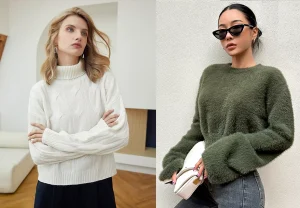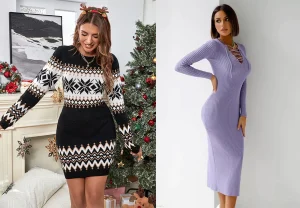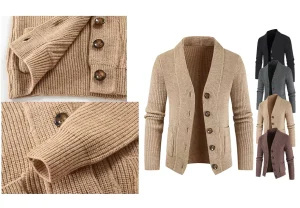Knitted jumpers, often referred to as sweaters or pullovers, are a timeless staple in wardrobes around the world. These cozy garments offer warmth, comfort, and style, making them a beloved choice for both fashion and function. With their origins dating back centuries, knitted jumpers have evolved from simple utilitarian garments to intricate pieces of artistry, reflecting cultural traditions, technological advancements, and individual creativity.
In this comprehensive exploration, we invite you to embark on a captivating journey into the intricate world of knitted jumpers. We will meticulously uncover not only the rich tapestry of their history, construction methods, diverse styles, and profound cultural significance but also delve deeply into the multifaceted nature of their craftsmanship.

Join us as we illuminate the boundless creativity inherent in every meticulously woven stitch, from the foundational techniques of knitting to the cutting-edge trends shaping the landscape of jumper fashion. Together, let’s unravel the threads of this enduring wardrobe essential, revealing the timeless allure that continues to captivate generations.
A Brief History of Knitted Apparel
Knitting, the unique process of creating fabric by interlocking loops of yarn with knitting needles or a knitting machine, has a rich and diverse history that spans centuries. While the exact origins of knitting are debated among historians, evidence suggests that the practice dates back to at least the Middle Ages.
Early examples of knitted textiles have been found in various cultures around the world, including Egypt, the Middle East, and South America. However, it was in Europe during the Middle Ages that knitting began to gain popularity as a method of producing warm and durable clothing.
Initially, knitting was primarily a domestic craft, with individuals handcrafting garments for their families using simple techniques and basic tools. However, with the advent of knitting guilds and the Industrial Revolution, knitting transitioned from a cottage industry to a mechanized process, leading to increased production and accessibility of knitted apparel.
In the 19th and 20th centuries, knitting underwent further advancements with the introduction of new materials, such as wool and cotton blends, as well as innovations in knitting machinery. This period saw the rise of knitted apparel as a fashion statement, with designers and manufacturers creating a wide range of styles and patterns to suit every taste and occasion.
Today, knitted apparel remains a popular choice for its versatility, comfort, and timeless appeal. From classic Aran sweaters to contemporary knitwear designs, the art of knitting continues to thrive, connecting generations through its rich history and enduring craftsmanship.
Materials and Yarns: Choosing the Right Fibers
When it comes to knitting, selecting the right yarn is essential for achieving the desired look, feel, and performance of your project. With a wide variety of fibers available, each offering unique characteristics and properties, understanding the differences between them is key to creating successful knitted garments.

In this section, we will explore the most common types of yarns used in knitting and provide guidance on choosing the right fibers for your next project.
1. Natural Fibers:
Wool:
Known for its warmth, elasticity, and durability, wool is a popular choice for knitting projects. It comes in various grades and textures, ranging from fine merino wool to coarser breeds like Shetland and Icelandic.
Cotton:
Lightweight and breathable, cotton yarn is ideal for warm-weather garments and accessories. It offers excellent stitch definition and is easy to care for, making it a versatile option for a wide range of projects.
Silk:
Luxurious and lustrous, silk yarn adds elegance and sheen to knitted garments. It drapes beautifully and is often blended with other fibers to enhance its properties.
Linen:
Known for its strength and durability, linen yarn is prized for its crisp texture and cool, breathable qualities. It is ideal for creating lightweight, summertime garments.
2. Synthetic Fibers:
Acrylic:
Affordable and easy to care for, acrylic yarn is a popular choice for beginners and budget-conscious knitters. It comes in a wide range of colors and textures and is often used for blankets, accessories, and children’s clothing.

Polyester:
Durable and resistant to stretching and shrinking, polyester yarn is often blended with other fibers to add strength and stability to knitted fabrics. It is commonly used in combination with natural fibers to create yarns with enhanced performance properties.
Nylon:
Strong and resilient, nylon yarn is prized for its elasticity and durability. It is often used in sock yarns to add strength and abrasion resistance to the finished fabric.
3. Specialty Fibers:
Alpaca:
Soft, warm, and lightweight, alpaca yarn is prized for its luxurious feel and excellent insulating properties. It is hypoallergenic and comes in a range of natural colors.
Mohair:
Known for its fuzzy texture and halo effect, mohair yarn adds warmth and dimension to knitted fabrics. It is often blended with other fibers to create soft, fluffy garments and accessories.
Cashmere:
Considered the epitome of luxury, cashmere yarn is prized for its softness, warmth, and exquisite drape. It is made from the fine undercoat of cashmere goats and is one of the most sought-after fibers in the world.
When choosing yarn for your knitting project, consider factors such as fiber content, texture, weight, and intended use. Experimenting with different yarns and blends will allow you to explore the vast world of knitting and discover the perfect fibers for your next masterpiece.

Knitting Techniques: From Basic Stitches to Complex Patterns
Knitting is a versatile craft that offers a wide range of techniques and possibilities for creating beautiful and intricate fabrics. Whether you’re a beginner or an experienced knitter, mastering basic stitches and understanding complex patterns opens up a world of creative possibilities. In this section, we’ll explore some fundamental knitting techniques, from basic stitches to more advanced patterns, and guide how to achieve stunning results in your knitting projects.
1. Basic Stitches:
Knit Stitch (K):
The knit stitch is the foundation of knitting and creates a smooth, flat fabric. To knit, insert the right needle into the first stitch on the left needle from front to back, wrap the yarn around the right needle, and pull it through the stitch to create a new loop.
Purl Stitch (P):
The purl stitch creates a textured fabric with raised bumps on the right side. To purl, insert the right needle into the first stitch on the left needle from back to front, wrap the yarn around the right needle, and pull it through the stitch to create a new loop.
2. Increases and Decreases:
Knit Increase (Kfb):
Knitting into the front and back of the same stitch creates a new stitch and increases the stitch count by one.
Knit Two Together (K2tog):
Knitting two stitches together as one decreases the stitch count by one and creates a slanted decrease.
Slip, Slip, Knit (SSK):
Slipping two stitches knitwise onto the right needle, and then knitting them together through the back loop creates a left-leaning decrease.
3. Lace and Cable Patterns:
Lace Knitting:
Lace patterns create openwork designs by incorporating yarn over and decreases. Common lace motifs include eyelets, diamonds, and leaves, which add texture and visual interest to knitted fabrics.
Cable Knitting:
Cable patterns create raised, twisted motifs that resemble braided cables. By crossing stitches over each other, cable knitting creates intricate textures and designs that are both elegant and timeless.
4. Colorwork Techniques:
Stranded Knitting (Fair Isle):
Stranded knitting involves carrying two or more colors of yarn across the back of the work to create multicolored designs. Fair Isle knitting, a traditional technique from the Shetland Islands, is known for its intricate colorwork patterns and geometric motifs.
Intarsia Knitting:
Intarsia knitting allows you to create blocks of color within a knitted fabric by using separate balls of yarn for each color section. This technique is often used to knit pictures or motifs with distinct color blocks.

By mastering these knitting techniques, you can create a wide variety of garments, accessories, and decorative items, from simple scarves and hats to intricate sweaters and blankets. Experimenting with different stitches, patterns, and yarns allows you to unleash your creativity and express your unique style through knitting.
Conclusion:
In conclusion, if you’re in search of beautifully crafted knitted jumpers or related apparel for girls that combine quality, style, and comfort, look no further than Real Fashion Tex. With our dedication to superior craftsmanship and attention to detail, we take pride in offering a wide range of knitted garments that are both fashionable and functional.
Whether you’re seeking cozy sweaters, trendy cardigans, or stylish accessories, Real Fashion Tex has something to suit every taste and occasion. Our commitment to using high-quality materials and employing skilled artisans ensures that each piece is made to the highest standards, providing durability and long-lasting wear.
Don’t settle for the ordinary when you can have the extraordinary. Contact Real Fashion Tex today to explore our collection and get a quote for the perfect knitted jumper or apparel for the girls in your life. Let us help you elevate their wardrobe with timeless pieces that they’ll love to wear again and again.




